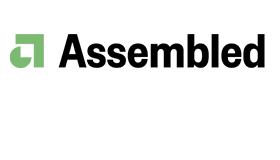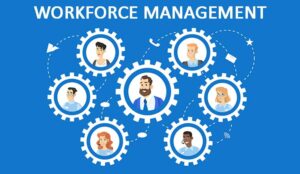Brian Sze at Assembled explains how to move beyond WFM and what it takes to accomplish workforce optimization.
Running a high-functioning customer support operation can feel like being a magician. While there are many activities going on behind the scenes, most people only see the final, seamlessly executed illusion. They’re not really aware of just how much time and energy you put into what you do.
It’s impressive that you’re able to make a difficult job look effortless, but perhaps you’re ready for it to feel that way, too. You’re aiming for the customer support equivalent of going from a magician to a legitimate wizard.
In the support realm, there’s a term for that: workforce optimization (WFO). But how exactly does WFO differ from workforce management (WFM)? And what does successful workforce optimization look like? Let’s start with the fundamentals.
Workforce Management vs. Workforce Optimization: What’s the Difference?
These terms probably seem more or less the same. And it’s true that some organizations use them interchangeably, but there are a few very important distinctions that are worth noting.
Workforce Optimization vs. Workforce Management
- Workforce Management refers to implementing the processes and systems that ensure you have the right people in the right place at the right time. When leveraged correctly, workforce management software ensures you have just enough agents staffed to respond to customers and still meet your targets.
- Workforce Optimization allows organizations to more swiftly adapt to changes, such as shifts in the labor market, to reduce operational costs, drive efficiency, and improve the customer experience. According to the International Customer Management Institute (ICMI), it’s a strategy that encompasses workforce management, quality assurance, and performance management, but it can really extend beyond that to incorporate any practices that help to future-proof your support team.
With these definitions in mind, you can see that a great workforce optimization solution really builds off workforce management to take your support operations to the next level. You might even think of it as WFM 2.0.
While many teams might see workforce optimization software as a “nice to have,” you’re wise to be thinking about it now.
Workforce optimization strategies are what will take your organization to the next level and set you apart from others in the market, ultimately improving the customer experience.
This has significant implications for the customer support department, of course, but also for the organization as a whole.
Consider some of the ways a poor customer experience can affect companies. A report from Hiver reveals that 70% of people who have a negative customer experience will warn the people they know about buying a product or service from that organization.
The report also indicates that 18% of those who have a poor customer service experience will vent about it on social media. And 30% are flat-out unwilling to give that organization another chance. That’s a pretty great business case for improved customer service!
Customers are even willing to pay more for great service. A survey from Replicant shows that 74% of customers are willing to pay nearly $16 on average if it means they can avoid waiting on hold or receiving a bad experience.
Even without considering the impact workforce optimization has on the customer experience (which is silly, but humor us), it improves your organization’s chances of business success by driving operational efficiency internally.
Say you implement a coaching program that enables agents to serve more customers per hour than they previously were.
Assuming the customer experience remains the same, this still leads to cost savings because you can now have a more efficient staffing schedule (and better employee engagement).
How to Evolve From Workforce Management to Workforce Optimization
Now that you know more about workforce optimization and why it’s so beneficial, you’re probably wondering how you can get your support team to that level – along with meeting all the other goals on your list.
You need to implement the right people, processes, and tools based on best practices. While it can seem daunting at first, it’s helpful to think of achieving workforce optimization process as a two-phased approach.
Phase 1: Establish Your Workforce Management Foundation
The first phase is all about ensuring you have a strong workforce management foundation, which involves time tracking, scheduling, forecasting, and analytics.
Having one centralized workforce management system, such as Assembled, that connects each of these four components is critical.
Why? Because as the Society of Workforce Planning Professionals (SWPP) points out, you can otherwise end up with siloed information that leads to numerous problems, such as:
- Lack of visibility into other departments’ initiatives
- Inability to quickly access relevant information
- Need to switch back and forth between different contact centre software
Now, let’s explore how to improve each of these WFM fundamentals to continue on your path toward WFO.
Streamline Agent Time Tracking
At best, time tracking feels like a nuisance for agents. At worst, it feels as though they’re under investigation.
While time tracking is essential for understanding how agents are spending their time throughout the day, many of the systems support teams use don’t provide a true picture of the activities agents are actually performing.
This is particularly true for agents who are providing email support — they can easily appear to be out of adherence if they need to navigate away from the customer’s email to a different screen in order to find the information they need to answer a question.
Luckily, the best workforce management solutions include sophisticated time-tracking capabilities that go beyond the binary “online” or “offline” statuses.
The result is that everyone gains greater visibility into how agents are actually spending their time at a granular level.
Simplify Scheduling
If your go-to method for building out schedules is updating the same spreadsheet you’ve been using for years, you’re in good company.
You might even find that it still works relatively well, but if your team is growing, you’re bound to reach a breaking point sooner or later.
The time to improve your scheduling process is now. You don’t even have to take our word for it — a survey from the SWPP shows that one of the most important measures of WFM success is related to scheduling efficiency and accuracy.
Leveraging workforce management software will save you an immense amount of time and frustration because it allows you to leverage automations to build schedules at scale while accounting for lunch breaks, meetings, and more.
Workforce management platforms also make it far easier to adjust the schedule in the event of a sick day or last-minute PTO request.
No more deleting and starting from scratch — just make a few quick changes, and the tool will take care of the rest.
Fine-Tune Forecast Accuracy
Generating accurate forecasts is a pretty crucial part of workforce management (and workforce optimization).
You need an accurate estimate of volume to determine your future staffing needs. The more accurate your forecast, the more cost-effective your team will be.
To get started, you simply have to make some educated guesses about your expected volume for a given time period.
Then, you can compare the actual volume to determine your forecast accuracy, and adjust accordingly.
The SWPP survey noted that forecast accuracy is a critical measure of WFM success — and not just by day, but even smaller increments.
That can start to become overwhelming if you’re manually pulling numbers and inputting them into spreadsheets, so it’s a huge help to leverage a workforce management platform.
It speeds up the process and also leaves you with more accurate forecasts to further home in on your staffing needs.
Make Better Decisions Based on Analytics
Keeping tabs on performance data is standard for anyone in a customer support leadership role. Reviewing customer service metrics helps you to understand not only how well your team is performing, but also where there’s room for improvement.
When it comes to tracking metrics, consistency is key for ensuring you’re able to quickly identify fluctuations and determine whether you need to take action.
That said, timeliness is just as critical. Finding out on Thursday that your agents were struggling to meet service levels on Wednesday leaves you with few options to adjust.
This is where real-time analytics comes in handy. It allows you to see what’s happening as it’s happening.
For example, if you’re seeing that multiple agents are falling behind their targets, you can reach out to an on-call agent to provide some temporary support.
Phase 2: Take the Final Steps Toward Successful Workforce Optimization
Only after you’ve fine-tuned your WFM processes and systems, you can move on to taking the final steps toward workforce optimization.
We mentioned earlier that performance management is a key component of workforce optimization software.
But if you don’t yet have robust analytics tools that enable you to identify opportunities for improvement, how will you know what type of performance coaching agents need?
Once you have a firm WFM foundation, you can move on to these final steps toward workforce optimization.
Establish a QA Program
As ICMI noted, having solid quality assurance practices is an important part of workforce optimization.
It allows you to evaluate employee performance, assign them a score, and compare everyone on a level playing field.
You can build a QA program however it works best for you, but Scorebuddy suggests the following steps:
- Define goals
- Determine key performance indicators
- Outline policies and procedures
- Implement the program
- Measure results and feedback
- Update as needed
Be particularly careful when it comes to identifying the right KPIs. According to Zendesk’s CX Trends 2022 report, 86% of agents are unsatisfied with the metrics used to measure their performance.
What this means is that you should incorporate metrics that speak to the quality of interactions rather than focusing solely on efficiency or labor costs.
It’s also worth considering whether you need additional contact centre workforce software to support this function.
There are many QA tools out there, but make sure to do your research first. You don’t want to end up purchasing a tool that doesn’t integrate with your WFM platform.
Prioritize Performance Management and Career Development
With agent performance metrics in hand, you’re now ready to focus on providing the coaching agents need to get even better at what they do.
For example, let’s say one of your agents has an unusually high abandon rate for live chat. They likely need some guidance on how to craft messages that feel friendlier and more personal to customers.
Believe it or not, quality instruction is something agents are craving more of. Zendesk’s CX Trends 2022 report shows that only 20% of agents are satisfied with the quality of the training they receive. It also indicates they want more career advancement opportunities.
When it comes to establishing coaching and career development programs, you have a number of options.
Depending on the workforce optimization solution you use, there may already be some training available to your team.
Both Zendesk and Intercom offer courses to help agents and managers hone their skills, all while improving employee productivity.
You might even make the case to leadership about the need to build out an internal professional development team with experts who can provide coaching and career development opportunities on a regular basis.
Identify the Ideal Makeup of Your Workforce
The final step in your workforce optimization journey is reaching the point where you can go beyond merely anticipating future hiring needs to identify exactly when you’ll need new team members and what their specializations should be.
How? Your forecasts, data analysis, and QA programs together can help you recognize skill gaps that need to be filled.
Maybe you need to hire more agents who are skilled in navigating complex phone conversations to address increasing volumes on that specific channel.
Or perhaps you’re in need of another support manager who can dedicate more time to onboarding new employees.
Pinpointing your hiring needs is important because it’s incredibly frustrating for employees to accept a position only to find out their day-to-day responsibilities are vastly different than what was communicated.
This doesn’t do much to encourage retention, which can be a huge issue for both the support team and the larger organization. In fact, shows that the cost of attrition is anywhere between $10,000 and $21,000 per employee.
Knowing exactly who it is you’re looking for when the hiring process begins will save you time and money in the long run. And happier, more satisfied agents? That’s just icing on the cake.
Continue to Learn, Adapt Processes, and Enhance Performance
Achieving workforce optimization is a process. You need to establish a sound workforce management strategy and implement the right workforce optimization tools before you can progress to the next level. You have to start with card tricks before you can get to levitating, so to speak.
But even once you reach that point, there’s always room for improvement. Workforce optimization strategies two years from now could look different than they do today, particularly if your future plans include expanding operations to new locations, increasing hours of operation, and hiring significantly more agents (in-house or through BPO).
This is why it’s so essential to always continue expanding your knowledge in the CX realm, even after you’ve adopted workforce optimization solutions.
There is always more to learn. However, if you’ve already spent some time searching for resources that address your specific needs, you know they’re in short supply. Don’t worry — we’ve got you covered.
This blog post has been re-published by kind permission of Assembled – View the Original Article
For more information about Assembled - visit the Assembled Website
Call Centre Helper is not responsible for the content of these guest blog posts. The opinions expressed in this article are those of the author, and do not necessarily reflect those of Call Centre Helper.
Author: Assembled
Published On: 27th Feb 2024 - Last modified: 6th Dec 2024
Read more about - Guest Blogs, Assembled






 Assembled is a Support Operations platform that helps companies maintain exceptional customer experiences, no matter what lies ahead. Leading brands use Assembled's workforce and vendor management capabilities to make optimal staffing decisions, gain visibility into performance and productivity, and unlock new ways to serve evolving customer needs.
Assembled is a Support Operations platform that helps companies maintain exceptional customer experiences, no matter what lies ahead. Leading brands use Assembled's workforce and vendor management capabilities to make optimal staffing decisions, gain visibility into performance and productivity, and unlock new ways to serve evolving customer needs. 









